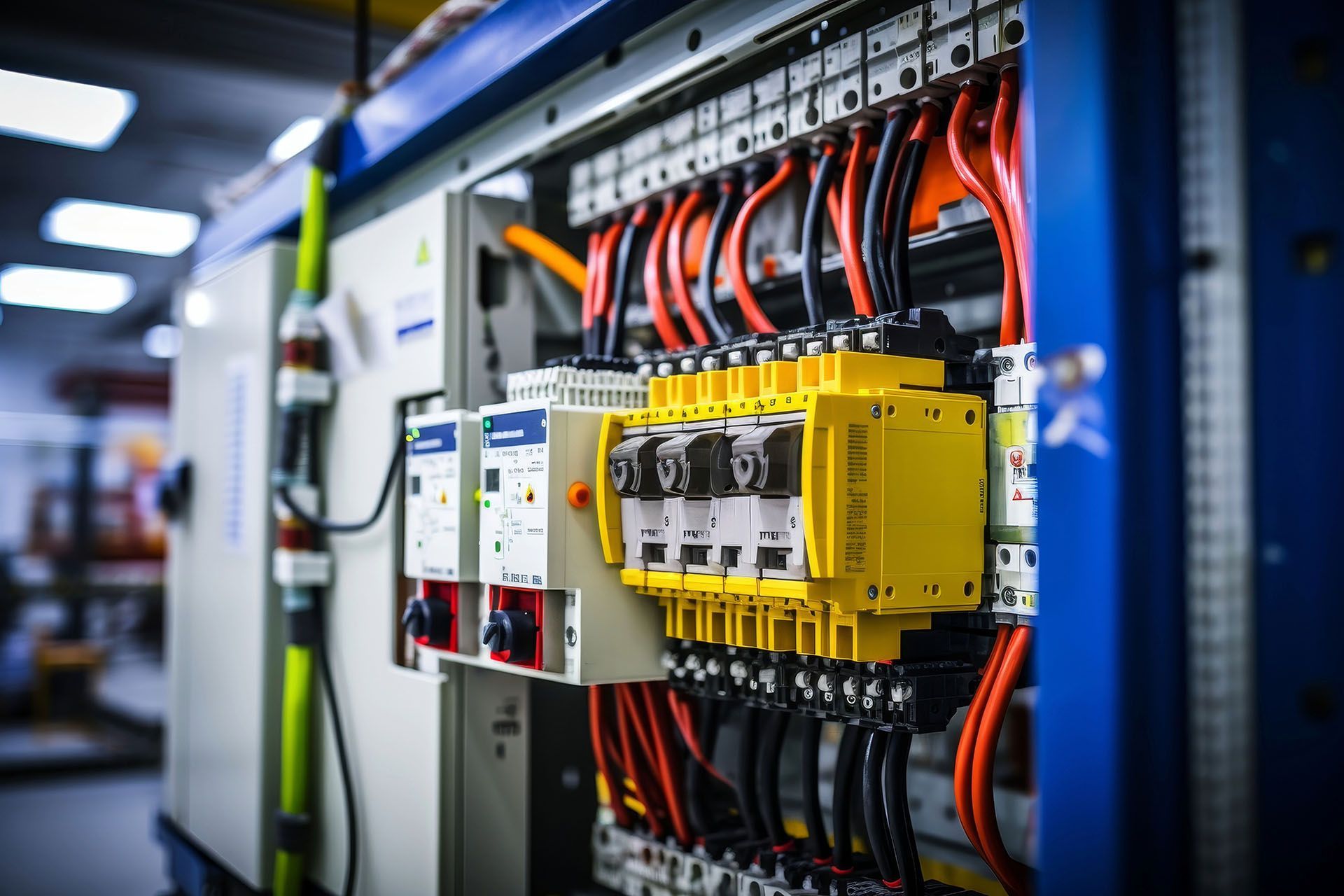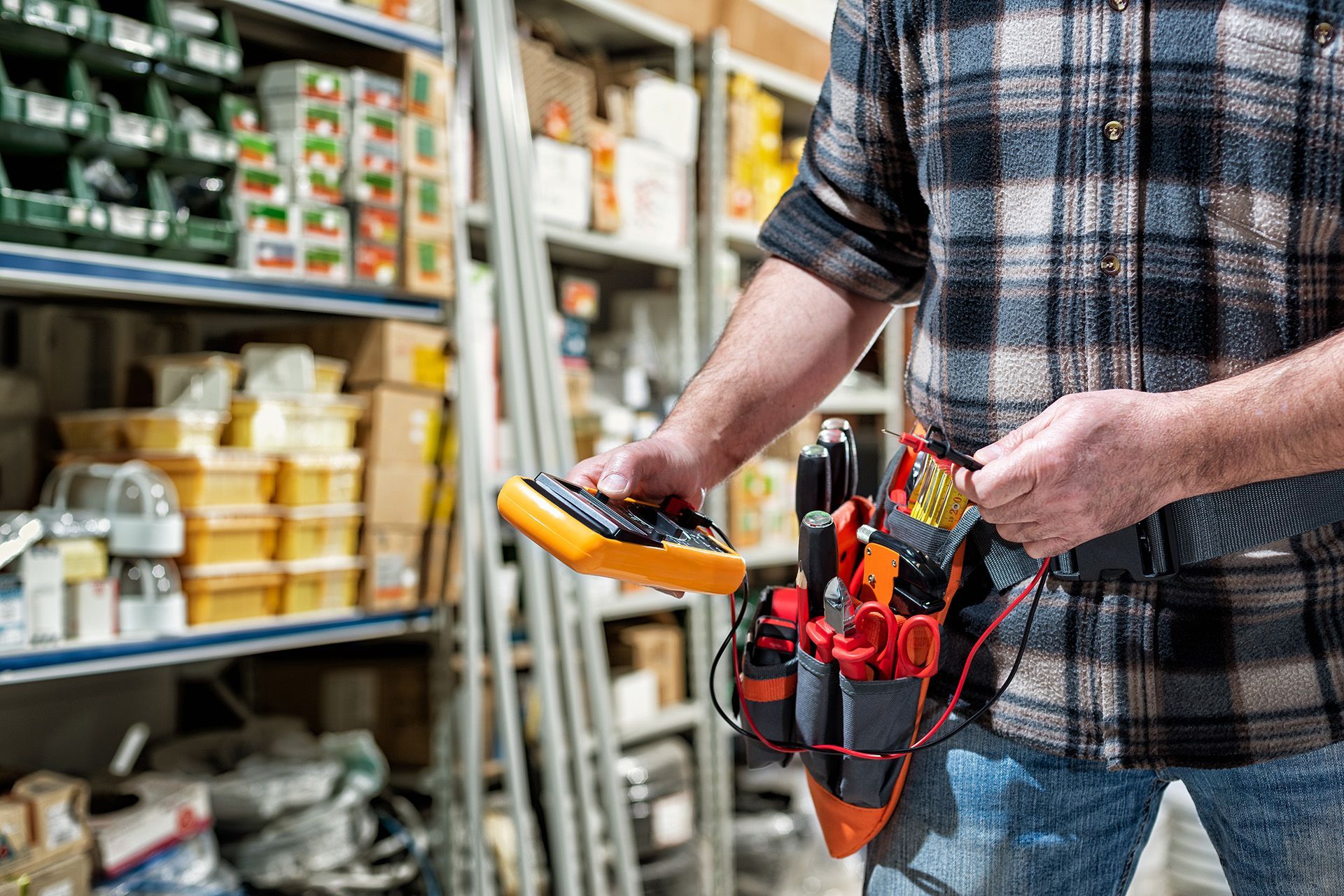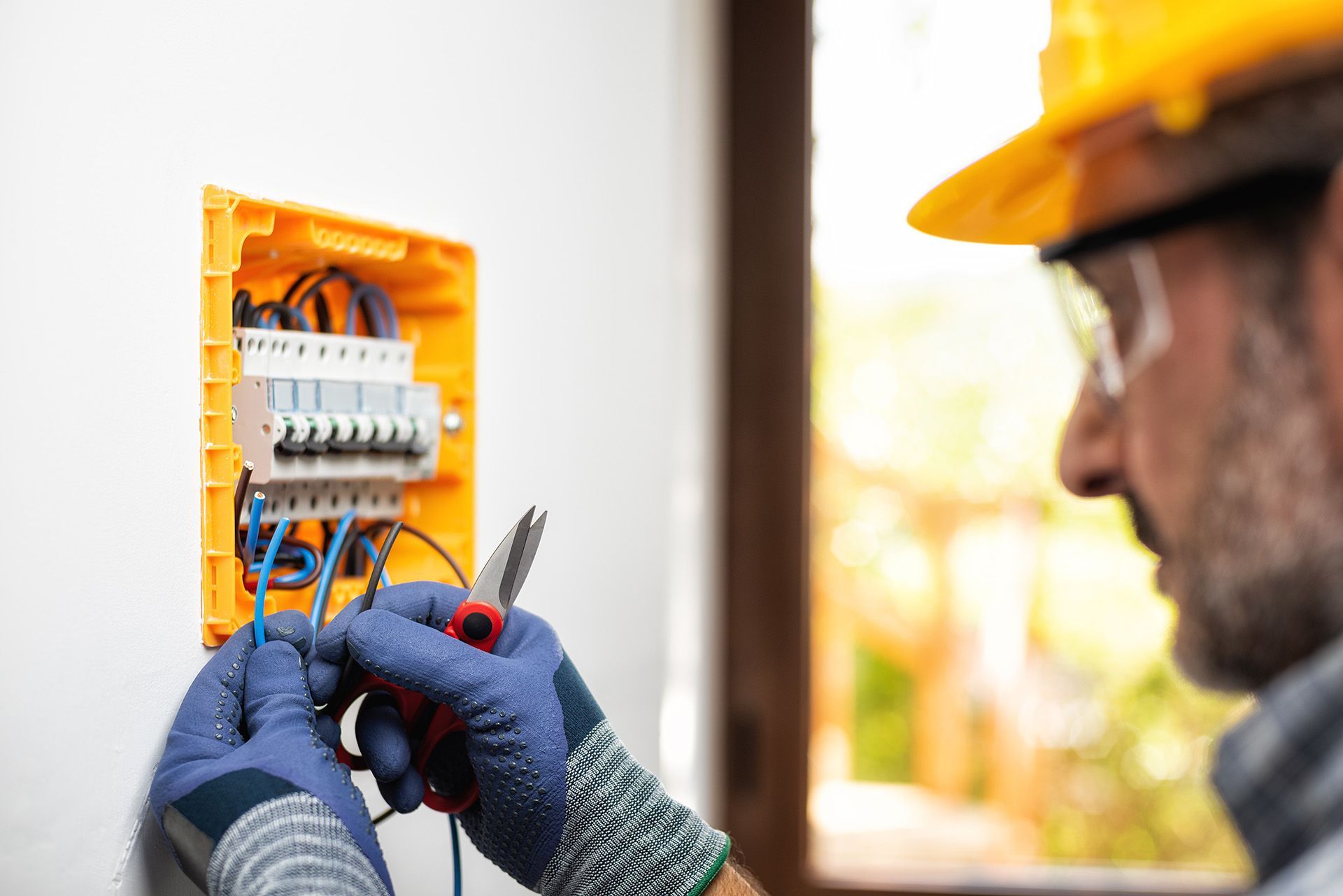Address: Unit 19, 54 Fairey Rd, South Windsor NSW 2756
Electrical Circuit Overload: What It Is and How to Stop It
Have you noticed flickering lights, frequently tripping circuit breakers, or unusual buzzing sounds in your building? Maybe some of your appliances are running hot, or you’ve started to experience random power outages? These could all be signs of an electrical circuit overload — a hidden problem that could disrupt your business operations and even pose safety risks if left unchecked.
An overloaded circuit occurs when too many electrical devices draw more current than the circuit can handle, leading to overheating and potential damage. The good news? With the right knowledge and preventive measures, you can avoid having to deal with costly repairs while making sure your operations run smoothly.
In this blog post, we’ll unpack the common causes of circuit overloads, help you identify the warning signs, and share practical tips to protect your commercial electrical system. Stay ahead of the problem and keep your business powered safely and reliably.
What Is a Circuit Overload?
A circuit overload happens when more electricity is being used on a circuit than it was designed to handle. Think of a circuit like a bridge—it can hold a certain weight. When too much weight (electricity) is added, the bridge can collapse.
Circuits are designed with specific limits for voltage and amperage, which correspond to the amount of electrical energy they can safely carry. When these limits are exceeded, the system’s safety features, such as circuit breakers, are triggered to prevent dangerous overheating. While this is a built-in safeguard, frequent overloads can strain your system and lead to costly repairs.
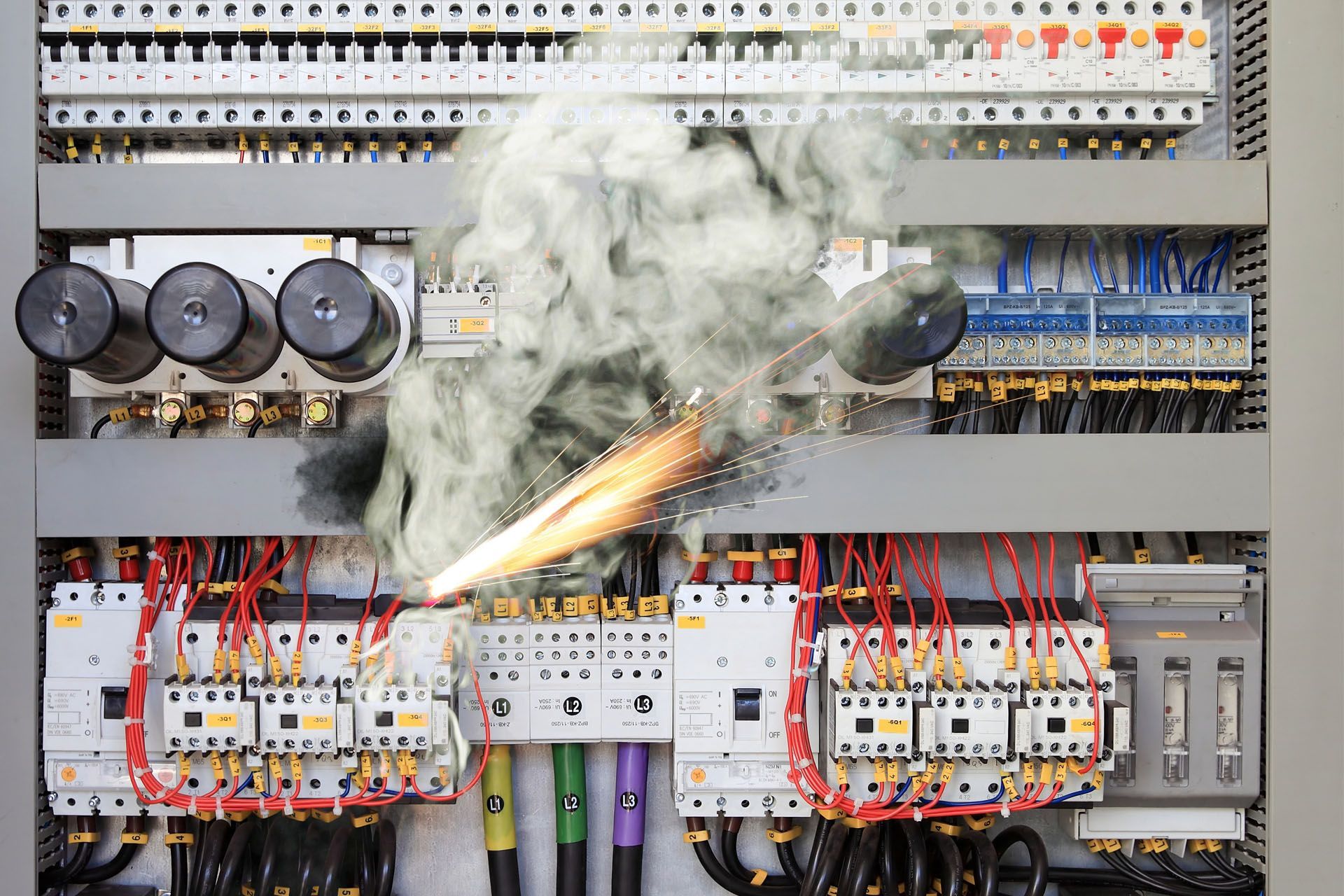
Signs of an Overloaded Circuit
Recognising the signs of an overloaded circuit can prevent potential damage to your electrical system and appliances. Look out for:
- Frequent Tripping of Breakers
Circuit breakers are designed to shut off power when a circuit is overloaded. If your breaker trips regularly, it’s a sign that too much electricity is flowing through a single circuit. Frequent tripping indicates the system is unable to handle the current load and needs attention.
- Flickering or Dimming Lights
Lights may flicker or dim when high-power appliances are turned on. This usually happens because the circuit can’t provide enough power to everything connected to it. For example, if lights dim when an air conditioning unit starts, the circuit might be nearing its capacity.
- Burning Smell or Discoloured Outlets
A burning smell or scorch marks around outlets indicate overheating due to electrical overloading circuits. This is a severe warning sign and requires immediate attention to avoid fire hazards.
- Warm Switches or Outlets
Outlets or switches that feel warm to the touch may indicate excessive energy flowing through them. This heat buildup can result from an overloaded circuit or faulty wiring and should not be ignored.
If you notice any of these signs, it’s crucial to address the issue promptly to avoid further complications.
Common Causes of Electrical Overloads
Several factors contribute to circuit overloads in commercial spaces, including:
1. Using the Same Circuit for Multiple Devices
Plugging too many devices, especially high-power ones, into the same circuit can exceed its capacity. For instance, using a microwave, toaster, and coffee maker on the same circuit can quickly lead to an overload. In commercial environments, overloading often occurs when several workstations or heavy-duty equipment share a single circuit.
2. Outdated Electrical Components
Older buildings may not have been designed to handle the power demands of modern equipment. Old wiring and electrical components often lack the capacity for today’s high-powered devices, increasing the risk of overloads.
3. High-Powered Machinery and Equipment
Large-scale operations involving HVAC systems, manufacturing machinery, or server racks require substantial energy. When these systems draw power from inadequately distributed circuits, the risk of overloading increases significantly.
The Risks of Overloaded Circuits in Commercial Spaces
For businesses, an electrical circuit overload is more than a maintenance issue. It poses risks that can impact both safety and profitability:
Fire Hazards
Overheating caused by an overloaded circuit can ignite electrical fires, endangering lives and property. Electrical fires often start inside walls or outlets, making them difficult to detect until significant damage has occurred.
System Failures
Damaged components in your electrical system can lead to operational downtime and expensive repairs. Prolonged overloads can compromise the integrity of wiring, outlets, and connected devices.
Compliance Violations
Improper handling of circuit overloads may breach safety regulations, resulting in fines or legal consequences. Compliance with standards is essential to maintain insurance coverage and protect your business from liability.
How to Prevent Electrical Overload
Preventing an overloaded electrical circuit is essential to maintaining safety and efficiency. Below are some practical strategies:
1. Assess Power Distribution Load
Evaluate whether your electrical system is capable of handling your current power needs. Many older commercial buildings are not designed to support the demands of modern businesses.
2. Distribute Power Usage
Avoid connecting too many high-wattage devices to the same circuit. Distributing power load evenly can prevent circuit overload and enhance system reliability.
3. Improve Breaker System
Modern circuit breakers are designed to handle higher loads and provide better protection against electrical circuit overload. Upgrading them is a critical step for older or high-demand systems.
4. Conduct Regular Maintenance and Electrical System Upgrade
Regular electrical inspections by a knowledgeable commercial electrician can help identify weaknesses in your electrical system and prevent potential overloads. If your business consistently experiences overloaded circuits, it might be time to upgrade the entire electrical system. Modern systems are better equipped to handle today’s energy demands.
The Role of Circuit Breakers
Circuit breakers are your first line of defence against electrical overloads. These devices automatically cut off power to a circuit when they detect an unsafe level of current flow. This prevents overheating, which can lead to electrical fires. If an electrical circuit is overloaded, the circuit breaker will trip, cutting off power to prevent overheating or damage to the electrical system.
- Preventing Damage to Wiring: By interrupting the flow of excessive current, circuit breakers protect wiring from overheating and subsequent damage.
- Isolating Overused Electrical Circuits: Tripping a breaker helps identify which circuit is experiencing an overload, allowing for targeted troubleshooting.
- Enhancing Safety: By halting power during overload conditions, breakers significantly reduce the risk of electrical fires.
What is an Electrical Load Calculation?
An electrical load calculation determines how much power is required to operate all devices and equipment connected to a single electrical circuit. It involves:
- Identifying Power Sources: Evaluating the sources of energy and the size of circuits in use.
- Calculating Maximum Current Draw: Determining peak demand from the entire circuit to prevent overloading.
- Optimising Wiring and Breakers: Ensuring the electrical system can handle current demands with the right circuit breakers and wiring components.
By staying within safe limits, you avoid electrical overloading circuits and the issues associated with an electrical overload.
Different Types of Electrical Loads
Electrical loads are classified based on their characteristics and applications. Two main categories include residential and commercial loads:
- Residential Loads: These are commonly found in homes, including lighting, air conditioning, heating systems, and household appliances. They typically demand less power compared to commercial setups.
- Commercial Loads: Found in businesses, offices, and factories, these loads require significantly more power. Examples include motors, pumps, ventilation systems, and elevators. Proper design and installation are crucial for safe and efficient operation.
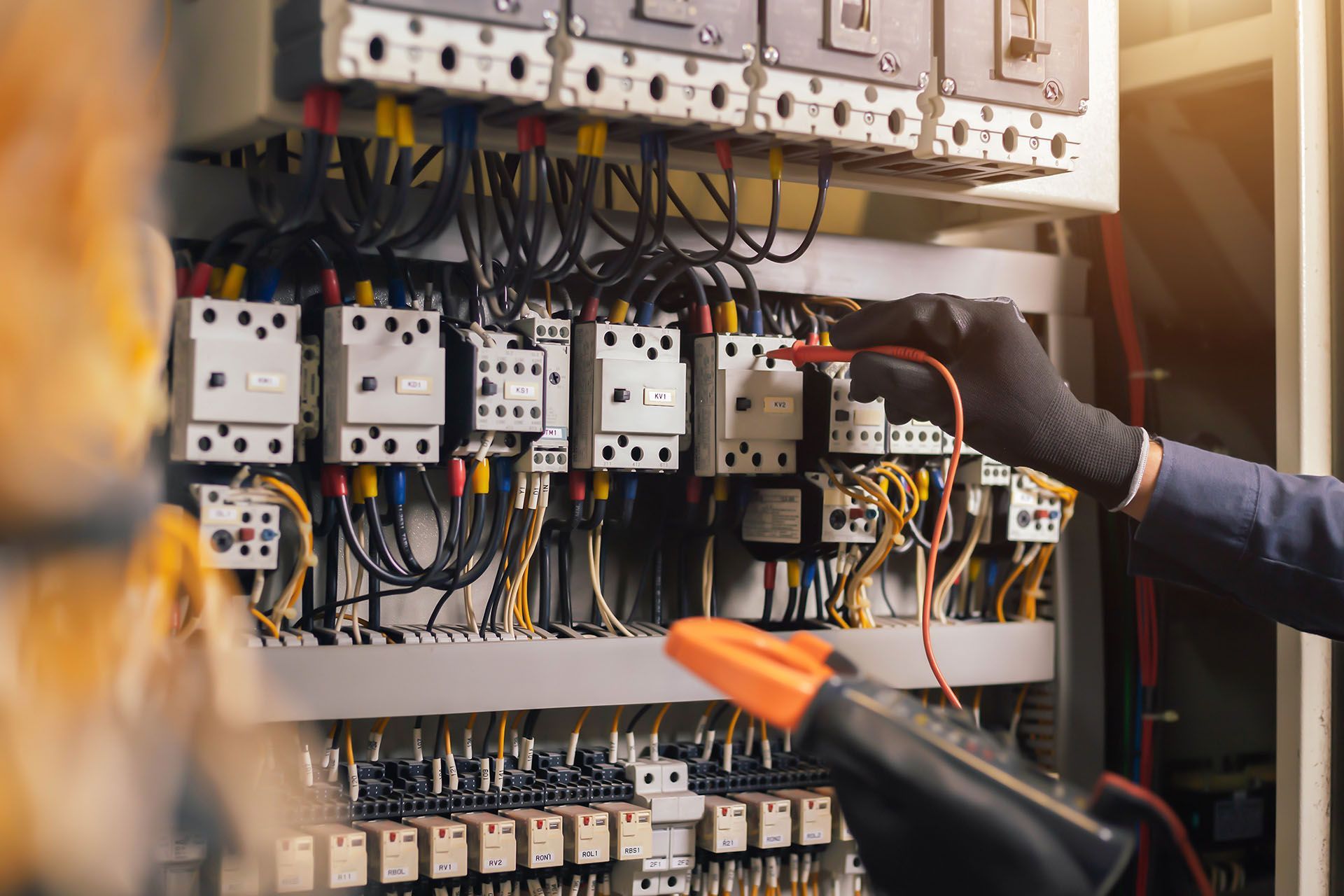
How to Calculate Circuit Loads
Calculating load capacity is vital to ensure safety and prevent circuit overloading. Begin by identifying the circuit capacity by multiplying the breaker size (in amps) by the voltage.
For example, a 20-amp breaker at 120 volts can handle up to 2400 watts. However, it is recommended using only 80% of this capacity, reducing the practical limit to 1920 watts.
Next, list all devices connected to the electrical circuit and note their power consumption in watts. If wattage is not provided, calculate it by multiplying the device's voltage by its current in amps. Add the wattages of all devices to find the total load. To check circuit usage, divide the total load by the recommended capacity.
For instance, if the load is 800 watts on a circuit with a 1920-watt capacity, it is operating at about 42% of its limit, leaving room for additional devices.
By following this process, you can ensure your electrical wiring operates safely and efficiently while accommodating future needs.
If you're unsure how much power your system can handle or experiencing frequent electrical overloads, it’s time to consult an expert.
When to Call a Professional
Sometimes, the problem goes beyond simple fixes. Consulting a licensed electrician is essential to resolve electrical overloading circuits, ensure compliance with safety standards, and protect your commercial property. Here’s how they can help:
- Thorough System Inspections
A licensed electrician conducts comprehensive inspections to detect hidden problems, such as loose connections, deteriorating wiring, or overloaded circuits, before they escalate into serious issues.
- Panel Upgrades and Circuit Additions
Modern businesses often outgrow their original electrical systems. An expert can upgrade your electrical panel to handle increased capacity or install additional circuits.
- Energy Efficiency Optimisation
Electricians can recommend and install energy-efficient solutions, such as LED lighting or energy-saving devices, to reduce power consumption and lower operating costs for your business.
- Emergency Repairs
In cases of power outages, sudden electrical faults, or hazardous conditions, a professional can provide quick and reliable emergency repairs to restore functionality and safety.
- Tailored Solutions for Commercial Properties
Commercial spaces have unique electrical demands based on their size, operations, and equipment. A professional electrician will assess your business’s needs and design a system tailored to ensure optimal performance and safety.
Final Thoughts
Preventing an overloaded circuit requires vigilance and proactive measures, from regular maintenance to system upgrades. Recognising the signs of an overloaded circuit, and upgrading circuit breakers can safeguard your operations.
Don’t wait for minor electrical issues to escalate into costly emergencies. Consulting a licensed electrician ensures your building's electrical infrastructure is properly maintained, compliant with safety standards, and capable of meeting your business’s power demands. Taking proactive steps today creates a safe, efficient, and reliable environment, safeguarding your property, employees, and long-term success.








